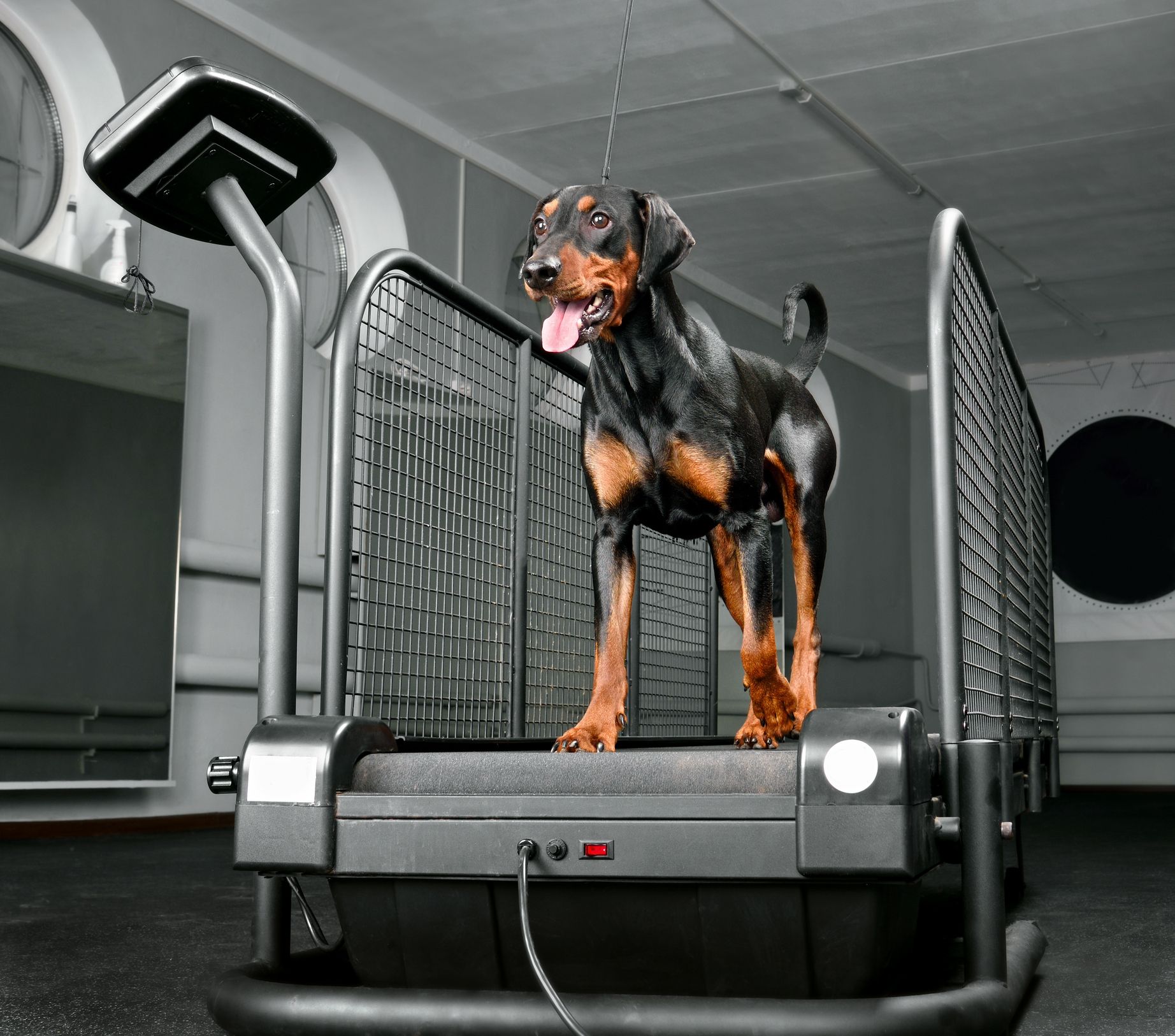Working on a dog treadmill can be great exercise for your dog when a long walk just isn’t possible, such as during the winter months. The key is to introduce your dog to the treadmill slowly. For your dog’s safety on the treadmill, be sure the belt is long enough for your dog’s stride.
Choosing a Dog Treadmill
Small dogs can use a human treadmill, but larger dogs often have a stride much longer than ours. For these large dogs, a doggy treadmill made for dogs is a better choice.
Dog training treadmill choices include:
Training a Dog on Treadmill
Start treadmill dog training slowly and make it positive. You want your dog to be comfortable with the treadmill and relaxed so she can have safe and productive exercise.
- Practice getting on and off the stationary treadmill. Give your dog treats for getting on the treadmill, and lure her on and off it from any direction. This teaches her how to safely get off if she gets tired or stressed later.
- Turn the treadmill on low and feed treats next to it. This helps your dog associate positive things with the sound of the moving belt.
- Encourage your dog to touch the moving belt. At first, reward if she touches one paw to the belt. Gradually work up to getting on the moving belt and immediately getting off in a controlled fashion.
- Gradually increase the amount of time your dog stays and walks on the moving belt. Feed multiple treats to reward her, but let her get off if she gets nervous.
- Once your dog is comfortable walking on the treadmill, gradually increase the speed.
Treadmill Dog Training Tips
- Use praise and treats so your dog thinks the treadmill is fun.
- Work up to a natural trotting pace for optimal exercise.
- Start with short sessions a couple times a day, increasing duration over time.
- For overweight dogs, short but frequent sessions are better than a single long session.
- Never tie your dog to the treadmill, as this can become dangerous.
- Never force your dog to get on the treadmill.
- Always supervise treadmill sessions.
This article was originally published by Whole-dog-journal.com. Read the original article here.


3 Comments